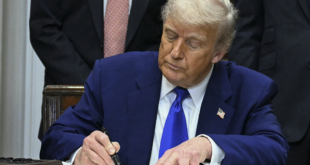The petrodollar system, the bedrock of global finance since the 1970s, faces an uncertain future. The recent expiration of the U.S.-Saudi petrodollar pact in June 2024 marks a turning point, prompting a reassessment of the dollar’s role in oil trade and the broader geopolitical landscape. This article delves beyond the narrative of a simple decline, exploring the complex interplay of factors driving a potential transition towards a multipolar financial order.
Beyond the Cracks: Structural Shifts and Geopolitical Tensions
While the waning U.S. dominance in oil production and the strained U.S.-Saudi relationship are significant factors, a deeper analysis reveals a more nuanced picture. The rise of unconventional oil and gas extraction methods like shale fracking in the U.S. has disrupted traditional supply chains. This, coupled with growing environmental concerns and the pursuit of energy independence by major economies, has led to a decrease in global dependence on OPEC oil. The International Energy Agency (IEA) forecasts a peak in oil demand by 2027, followed by a gradual decline as renewable energy sources gain traction.
Furthermore, the petrodollar’s vulnerabilities are amplified by the increasing influence of alternative payment systems. China’s ongoing efforts to internationalize the yuan, the creation of regional payment networks like the BeiDou Navigation Satellite System, and the burgeoning popularity of cryptocurrencies like petro (Venezuela) all challenge the dollar’s hegemony. While the current use of cryptocurrencies in oil transactions remains limited, their potential volatility and regulatory uncertainties hinder widespread adoption. However, the underlying technology of blockchain could influence future payment systems for commodities like oil.
The Rise of the Multipolar Order: A Fragile Balance
The decline of the petrodollar doesn’t necessarily translate to a single-currency replacement. A more likely scenario is the emergence of a multipolar financial order, where oil is priced and traded in a basket of currencies reflecting the evolving power dynamics.
China, the world’s largest oil importer, is actively pursuing this path. The Shanghai International Energy Exchange (INE) has launched yuan-denominated oil futures contracts, attracting participation from major producers like Russia and Iran. This strategy aims to not only bolster the yuan’s international standing but also establish China as a key player in the global energy market. Additionally, China’s Belt and Road Initiative (BRI) seeks to create a vast infrastructure network connecting Asia, Europe, and Africa, potentially creating a yuan-denominated trade bloc for oil and other commodities.
However, navigating a multipolar system presents its own challenges. Balancing the interests of diverse stakeholders with potentially conflicting agendas will be crucial. For instance, Russia, a major oil producer with strained relations with the West, may prioritize alternative pricing mechanisms that challenge U.S. dominance. Additionally, the lack of a single dominant currency could lead to increased market volatility, impacting both oil producers and consumers. Producers may face difficulties in budgeting and planning investments due to exchange rate fluctuations. Consumers, on the other hand, could be exposed to higher energy prices as a result of short-term market gyrations.
The U.S.: Adapting to a New Reality
The Biden administration has acknowledged the changing landscape and is actively pursuing strategies to maintain the dollar’s relevance. These include:
• Renewed focus on clean energy: Investments in renewable energy development and research can help the U.S. position itself as a leader in the transition towards a low-carbon future. This not only reduces dependence on imported oil but also creates new economic opportunities in clean energy technologies. The recently passed Inflation Reduction Act allocates significant funding towards clean energy initiatives, signaling a commitment to this strategy.
• Strengthening alliances: Building stronger economic and political ties with key oil producers outside of the Middle East, such as African nations with growing reserves, could diversify U.S. energy partnerships. This could potentially lead to oil being priced in a basket of currencies reflecting the contributions of these new partners.
• Embracing financial innovation: The U.S. Federal Reserve and financial institutions are exploring the potential of central bank digital currencies (CBDCs) to maintain the dollar’s competitive edge in the evolving digital payments landscape. A CBDC could offer a secure and efficient alternative to traditional payment systems, potentially enticing foreign entities to continue using the dollar for oil transactions.
The success of these strategies will depend on the U.S.’s ability to adapt to a world where oil no longer reigns supreme and to demonstrate its continued value as a reliable economic and political partner.
The Road Ahead: Scenarios and Implications
The trajectory of the petrodollar system remains uncertain, with several potential scenarios unfolding:
• A Gradual Shift: A slow move away from dollar dominance, with a basket of currencies used for oil pricing, alongside the continued use of the dollar in some transactions. This scenario would likely lead to increased volatility in the short term but could stabilize in the long run. The success of this scenario would depend on international cooperation and the ability of major oil producers and consumers to agree on a transparent and stable pricing mechanism.
• A Regionalized System: The emergence of regional blocs like BRICS establishing their own oil pricing mechanisms, potentially undermining the dollar’s global influence. This could fragment global energy markets and complicate trade flows. For instance, a BRICS-led oil pricing mechanism could be denominated in a basket of currencies like the yuan, rupee, and ruble, primarily used for transactions within the bloc. This scenario would create challenges for countries outside these blocs, potentially leading to higher energy prices and increased geopolitical tensions.
• A Black Swan Event: An unforeseen event, like a major geopolitical crisis or a breakthrough in clean energy technology, could drastically accelerate the decline of the petrodollar. This scenario would be the most disruptive, leading to significant economic and political instability. For instance, a major conflict in the Middle East disrupting oil supplies could trigger a global energy crisis, forcing a rapid shift away from the dollar-denominated oil trade.
Implications of a Changing Petrodollar System
The implications of a changing petrodollar system are far-reaching. A decline in the dollar’s dominance could lead to:
• Higher borrowing costs: The U.S. government and businesses may face higher interest rates as investors seek alternative safe-haven currencies. This could slow down economic growth and potentially lead to fiscal challenges.
• Shifting geopolitical power: A weakened dollar could translate into diminished U.S. influence on international financial institutions like the International Monetary Fund (IMF) and the World Bank. This could lead to a more multipolar world order with new power centers emerging.
• Increased market volatility: A transition period with no clear dominant currency could create uncertainty and instability in global energy markets. This could lead to price fluctuations that impact both producers and consumers.
• Reshaping of Global Trade: The decline of the petrodollar system could lead to a diversification of global trade patterns. Countries may prioritize trade deals with partners offering alternative currencies for oil transactions.
Conclusion: Navigating a New Era
The petrodollar system’s decline is not a sudden collapse, but rather a complex transformation driven by a confluence of economic, technological, and geopolitical factors. The road ahead is paved with uncertainty, with the potential for a gradual shift, a regionalized system, or even a more disruptive scenario. The success of the transition will depend on the ability of major players to adapt, cooperate, and innovate.
The U.S. needs to focus on clean energy development, strengthen strategic alliances, and embrace financial innovation to maintain its economic and geopolitical influence. Meanwhile, countries like China are actively positioning themselves to play a larger role in the global energy market. The coming years will likely see a period of experimentation and negotiation as new pricing mechanisms and trade partnerships emerge. This transition presents both challenges and opportunities, with the potential to reshape the global financial landscape and redefine the balance of power in the international arena.
 Eurasia Press & News
Eurasia Press & News


